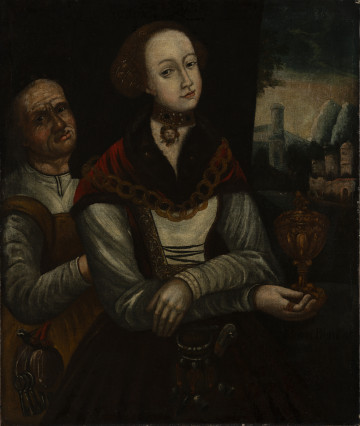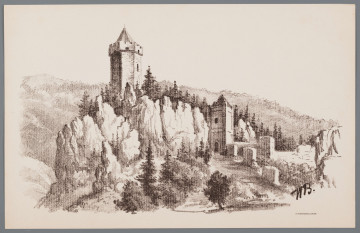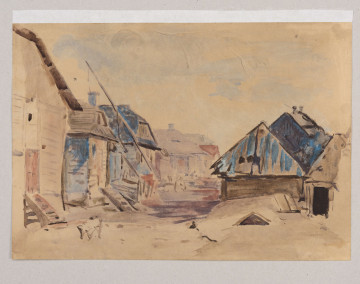
Sidonia von Borcken gestalt in ihrer Jugend wie ihrem Alter | Sidonia von Borcke represented as a young and old woman
1701 — 1800
National Museum in Szczecin
Part of the collection: Polish landscape painting (19th–1st half of the 20th c.)
Leon Wyczółkowski (1852-1936) is counted among the most outstanding artists of the Young Poland period. He was educated in the Warsaw Drawing Class under W. Gerson, R. Hadziewicz and A. Kamiński and in Munich. He improved his skills under the supervision of J. Matejko at the School of Fine Arts in Kraków (1877-1879). In 1895, he settled in Kraków and took up the post of professor at his alma mater.
The fascination with the Tatra Mountains and the highland culture, common among Young Poland artists, often treated as a carrier of symbolic content, was linked to, among other things, the popularity of Zakopane. At the turn of the century, it became a cultural centre frequented by artistic bohemians. One of the admirers of the Tatra nature was also Wyczółkowski, who came to the Tatra Mountains from 1896 until the 1920s. The artist made them the leitmotif of his landscapes executed mainly in pastel and watercolour technique, and transposed into graphics. The most interesting mountain views were created in the years 1904-1906, including Pejzaż górski z willą [Mountain landscape from the villa] (1905). During his stay in Zakopane in August and September of that year, the artist stayed with the widow of Professor P. Chmielowski. Plein-air expeditions to Lake Morskie Oko, Czarny Staw and the Zakopane region produced many picturesque views of mountain lakes and peaks, rocky slopes, passes, valleys and buildings scattered around them. The pastel in question is an example of a landscape sparing in its form, synthetic. In this work, Wyczółkowski used principles of composition construction taken from the aesthetics of Japanese woodcuts - asymmetry and specific framing, pushing the title villa to the edge of the representation, and economical use of means of expression - a subdued palette, use of flat patches and emphasis on the role of empty space. The composition is enlivened by the diagonal arrangement of the slope and its intensely illuminated fragment, which contrasts with the sunless, cloud-covered surface of the gloomy sky.
Anna Hałata
Author / creator
Dimensions
cały obiekt: height: 74 cm, width: 54 cm
Object type
drawing
Technique
pastel
Creation time / dating
Creation / finding place
Owner
The National Museum in Lublin
Identification number
Location / status

1701 — 1800
National Museum in Szczecin

1913
National Museum in Lublin

1801 — 1900
National Museum in Lublin
DISCOVER this TOPIC
National Museum in Szczecin
DISCOVER this PATH
Educational path